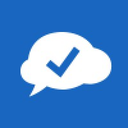Float vs Stackfield (2026 Comparison)

Float offers a user-friendly interface for efficient resource scheduling and management. Its seamless integrations and comprehensive reporting features make it a valuable tool for optimizing team productivity.
- Intuitive interface for easy scheduling
- Seamless integrations with other tools
- Comprehensive reporting features
- Limited security features
- Basic collaboration tools
Free plan?
YesStarting price
$6.50 per person/month
Stackfield provides robust security with end-to-end encryption, making it ideal for teams handling sensitive data. Its task management and collaboration tools enhance team efficiency and project success.
- Strong security with encryption
- Robust task management features
- Excellent team collaboration tools
- Complex interface for new users
- Fewer integrations available
Free plan?
YesStarting price
€11 per month per userWhat is Float?
Float is a resource management software designed to help teams plan, track, and manage their resources effectively. It offers a visual interface that makes scheduling and forecasting a breeze, allowing you to see who is working on what and when. With Float, you can easily adjust schedules, manage workloads, and ensure that your team is working efficiently. It integrates seamlessly with other tools, making it a versatile choice for businesses looking to streamline their operations.
What is Stackfield?
Stackfield is a collaboration and project management tool that provides a secure platform for teams to communicate, manage tasks, and share files. It offers end-to-end encryption, ensuring that your data is safe and secure. Stackfield's intuitive interface makes it easy for teams to collaborate in real-time, track project progress, and stay organized. Whether you're managing a small team or a large organization, Stackfield helps you keep everything in one place, making it easier to manage your projects and improve productivity.
Pros and Cons of Float vs Stackfield

Pros & Cons of Float
- Float's interface is designed to be user-friendly, allowing you to schedule resources with ease. The drag-and-drop functionality makes it simple to adjust schedules and manage workloads efficiently.
- Float integrates effortlessly with a variety of tools, enhancing its versatility and making it a valuable addition to your existing software ecosystem.
- Float offers detailed reporting tools that provide insights into resource utilization and project performance, helping you make informed decisions.
- While Float offers standard security measures, it lacks the advanced encryption features found in other tools, which may be a concern for teams handling sensitive data.
- Float's collaboration features are functional but not as advanced as those offered by other tools, making it less suitable for teams that require extensive collaboration capabilities.

Pros & Cons of Stackfield
- Stackfield prioritizes security with its end-to-end encryption, ensuring that your data is protected at all times. This makes it an ideal choice for teams handling sensitive information.
- Stackfield excels in task management, offering a range of features that allow you to track tasks, set deadlines, and collaborate effectively with your team.
- Stackfield provides a suite of collaboration tools that facilitate real-time communication and file sharing, making it easy for teams to work together efficiently.
- Stackfield's interface can be overwhelming for new users, requiring a learning curve to fully utilize its features. This may be a drawback for teams looking for a straightforward solution.
- While Stackfield offers essential integrations, it lacks the extensive integration options found in other tools, which may limit its versatility for some users.
Float vs Stackfield: At A Glance
Value to Price
Float offers a competitive pricing model that aligns well with its robust features, making it a great value for businesses looking to optimize resource management. Stackfield, while slightly more expensive, provides excellent security features that justify its cost. If security is a top priority, Stackfield might be the better choice.
Ease of Use
Float's intuitive interface makes it easy for users to navigate and manage resources efficiently. Stackfield also offers a user-friendly experience, but its additional security features can add a layer of complexity. If you prefer simplicity, Float is the way to go.
Functionality
Both Float and Stackfield offer a wide range of functionalities. Float excels in resource management, while Stackfield shines in collaboration and project management. If your focus is on collaboration, Stackfield is the better option.
Scalability
Float is designed to scale with your business, making it suitable for growing teams. Stackfield also offers scalability but is more suited for teams that prioritize security. If you're planning to expand, Float is a solid choice.
Integrations
Float integrates seamlessly with various tools, enhancing its versatility. Stackfield offers fewer integrations but compensates with strong security features. If integrations are crucial, Float is the better option.
Customer Support
Float provides reliable customer support, ensuring that users can resolve issues quickly. Stackfield offers excellent support as well, with a focus on security-related queries. If you need robust support, both tools are commendable.
Security
Stackfield takes the lead in security with its end-to-end encryption, making it ideal for teams handling sensitive data. Float offers standard security features but doesn't match Stackfield's level. If security is paramount, choose Stackfield.
Overall Rating
Float scores slightly higher overall due to its ease of use and value for price. Stackfield is a close contender, excelling in security and collaboration. Choose Float for simplicity and Stackfield for security.
Float vs Stackfield: A Detailed Breakdown of Key Features
Resource Scheduling
Float excels in resource scheduling with its intuitive drag-and-drop interface, making it easy to allocate resources efficiently. I found it particularly useful for visualizing team workloads and adjusting schedules on the fly. Stackfield, while offering scheduling features, focuses more on task management. If resource scheduling is your priority, Float is the better choice.
Task Management
Stackfield shines in task management with its robust features that allow for detailed task tracking and collaboration. I appreciated the ability to assign tasks, set deadlines, and track progress seamlessly. Float offers task management as well, but it's more focused on resource allocation. For comprehensive task management, Stackfield is the way to go.
Team Collaboration
Stackfield offers superior team collaboration features, including real-time communication and file sharing, which I found invaluable for keeping everyone on the same page. Float provides collaboration tools too, but they are more basic. If collaboration is key, Stackfield is the better option.
Time Tracking
Float's time tracking capabilities are impressive, allowing you to monitor how time is spent across projects. I found it helpful for ensuring projects stay on track. Stackfield offers time tracking as well, but it's not as detailed. For precise time tracking, Float is the better choice.
File Sharing
Stackfield's file sharing is secure and efficient, making it easy to share documents within the team. I appreciated the encryption features that ensure data safety. Float offers file sharing too, but it's more straightforward. If security in file sharing is crucial, Stackfield is the better option.
Reporting
Float provides comprehensive reporting tools that help you analyze resource utilization and project performance. I found the reports easy to generate and insightful. Stackfield offers reporting features as well, but they are more focused on task completion. For detailed reporting, Float is the better choice.
Pricing Comparison of Float and Stackfield
To assist you in making an informed choice, we’ve outlined the pricing plans and essential features of Float and Stackfield. This comparison will highlight the best option for managing your resources and projects.

Float Pricing Plans
- Capacity management and forecasting to optimize resource allocation.
- Mobile app and integrations for seamless connectivity and access.
- Unlimited guest users to collaborate with external stakeholders.
- 24 hour/5 day support for timely assistance and issue resolution.
- Pre-filled timesheets to streamline time entry and reduce errors.
- Desktop timer app for easy time tracking and productivity.
- Saved custom views for personalized project management experience.
- 180 day audit log for comprehensive tracking and compliance.
- Service Level Agreements (SLA) for guaranteed service quality.
- Personalized onboarding for smooth transition and setup.
- Priority support for quick resolution of critical issues.
- Manual payment options for flexible billing arrangements.

Stackfield Pricing Plans
- Polls to gather opinions and make informed decisions quickly.
- Tasks management to keep track of assignments and deadlines.
- Projects feature to organize and manage multiple projects efficiently.
- Milestones to track progress and achieve project goals on time.
- Forwarding of emails to Stackfield for better email management.
- Whiteboards for visual collaboration and brainstorming.
- Project portfolios to manage and oversee multiple projects.
- Preview for Word, Excel, and PowerPoint files within the platform.
- Single sign-on for simplified and secure user access.
- 2FA using YubiKeys for enhanced security measures.
- Provisioning via API for automated user management.
- Global export for comprehensive data management and reporting.
Our Rating Methodology
We thoroughly evaluate each project management tool, focusing on key aspects like ease of use, functionality, and security. By analyzing user feedback and testing features, we ensure our recommendations align with your needs. Each factor is weighted to provide a reliable final rating, helping you choose the best tool for your team.
Float or Stackfield: Which One Matches Your Business Needs?
Choose Float If You Need ...
- User-friendly resource management
If you are a team leader looking for an intuitive tool to manage resources efficiently, Float is the ideal choice. Its user-friendly interface and seamless integrations make scheduling and tracking a breeze.
- Comprehensive reporting needs
If you require detailed insights into resource utilization and project performance, Float's comprehensive reporting features will meet your needs. It provides valuable data to help you make informed decisions.
Choose Stackfield If You Need ...
- Secure collaboration platform
If you need a secure platform for team collaboration and data protection, Stackfield is the better option. Its end-to-end encryption ensures that your sensitive information remains safe.
- Advanced task management
If your focus is on robust task management and team collaboration, Stackfield excels in these areas. Its features allow for effective task tracking and real-time communication.
Frequently Asked Questions
 Which tool is better for resource scheduling?
Which tool is better for resource scheduling?
 How does Stackfield ensure data security?
How does Stackfield ensure data security?
 Can Float integrate with other tools?
Can Float integrate with other tools?
 Is Stackfield suitable for large teams?
Is Stackfield suitable for large teams?
 What are the main differences between Float and Stackfield?
What are the main differences between Float and Stackfield?
 Which tool offers better customer support?
Which tool offers better customer support?

Anastasia Belyh
Anastasia Belyh is a senior tech writer with over 15 years of experience in marketing, sales, and business software. Having worked in investment banking, management consulting, and founded multiple companies, her in-depth knowledge and hands-on expertise make her software reviews authoritative, trustworthy, and highly practical for business decision-makers.



